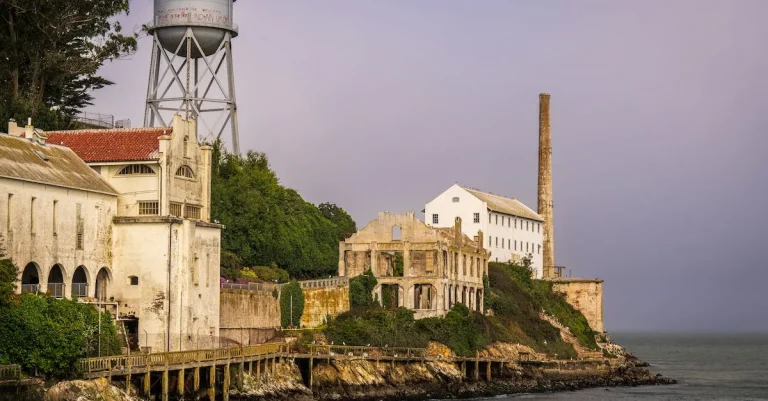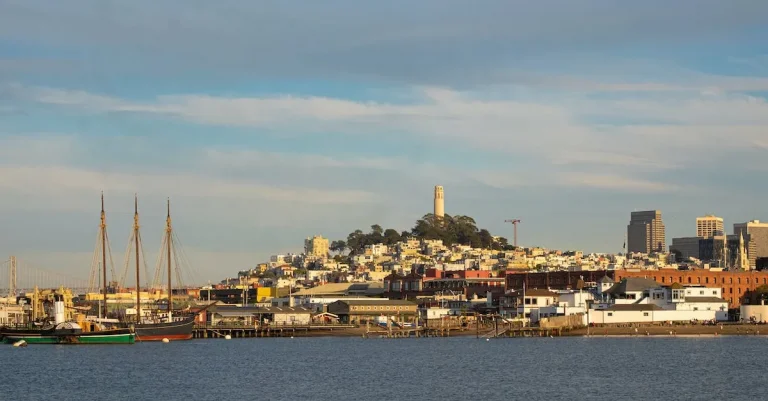Is Miami Beach Man-Made?
With its beautiful beaches, luxury hotels, and bustling nightlife, Miami Beach is one of Florida’s top destinations. But is this glamorous island entirely natural, or did humans have a hand in shaping it?
If you’re short on time, here’s a quick answer to your question: Yes, Miami Beach is largely man-made. Through projects over the last 100+ years involving dredging, landfill, and infrastructure development, the island of Miami Beach was drastically transformed from a natural mangrove swamp to the urban tourist destination it is today.
What Miami Beach Was Like Naturally
Miami Beach, now known for its stunning beaches and vibrant nightlife, was once a vastly different place in its natural state. Before human intervention, Miami Beach was primarily a swampy mangrove island.
Swampy Mangrove Island
The natural landscape of Miami Beach was characterized by dense mangrove forests, marshes, and wetlands. These mangrove trees, with their intricate root systems, provided a unique habitat for various species of wildlife.
The island was also surrounded by shallow waters, creating a natural barrier between the mainland and the Atlantic Ocean.
These wetlands played a crucial role in protecting the mainland from storms and coastal erosion. The mangroves acted as a buffer, absorbing the impact of strong winds and waves, and their root systems helped stabilize the soil and prevent erosion.
Additionally, the wetlands served as a natural filtration system, purifying the water that flowed through them and providing a habitat for numerous marine and bird species. The intricate ecosystem of the mangrove island supported a diverse range of flora and fauna.
Inhabited by Native Americans
Prior to European colonization, the Miami Beach area was inhabited by Native American tribes, particularly the Tequesta people. They recognized the importance of the island’s natural resources and relied on the surrounding waters for fishing and transportation.
The Tequesta people lived in harmony with the natural environment, utilizing the mangroves for building materials and crafting tools. Their understanding of the island’s ecosystem allowed them to sustain themselves and thrive in this unique coastal environment.
Early Attempts at Development
As Miami and the surrounding areas began to experience rapid growth and development in the late 19th and early 20th centuries, attention turned to the potential of Miami Beach. Entrepreneurs and visionaries saw the opportunity to transform the island into a thriving resort destination.
Early attempts at development involved draining the swamplands and dredging the surrounding waters to create usable land. Canals were dug to improve drainage and facilitate transportation. These efforts, combined with the construction of roads and bridges, gradually transformed Miami Beach from a natural island into a man-made paradise.
Today, the Miami Beach that we know and love is a testament to human ingenuity and the ability to shape the environment. While the natural landscape has been altered, it is important to appreciate the rich history and ecological significance of the area before it became the bustling city it is today.
The Dredging and Landfill Projects
Miami Beach, known for its stunning beaches and vibrant nightlife, is a popular tourist destination. But did you know that this iconic city is largely man-made? The transformation of Miami Beach from a mangrove swamp to a bustling metropolis is a result of extensive dredging and landfill projects that took place in the early 20th century.
Dredging of Biscayne Bay in 1913
In 1913, the ambitious project of dredging Biscayne Bay began, marking the first major step in the development of Miami Beach. The purpose of this project was to create new land by removing sand and sediment from the bay bottom and using it to extend the shoreline.
The dredged material was pumped onto submerged land, gradually building up the coastline. Over time, this process expanded the size of Miami Beach and created new land where there was once only water.
This dredging project not only increased the land area but also improved the navigability of the bay, allowing larger ships to access Miami’s port. This played a crucial role in the growth of the city’s economy, as it facilitated trade and transportation.
Expanded Landfill in the 1920s-1930s
The dredging project laid the foundation for further expansion of Miami Beach through landfill. In the 1920s and 1930s, large-scale landfill projects were undertaken to extend the city’s land area even more.
Thousands of acres of marshland and mangrove swamps were filled in, creating additional space for residential and commercial development.
This expansion was driven by the booming real estate market and the desire to accommodate the growing number of tourists flocking to the area. Landfill sites were carefully chosen to maximize the potential for development and to create a cohesive city layout.
Building of Infrastructure
With the new land in place, the next step was to build the necessary infrastructure to support the growing population. Roads, bridges, water and sewage systems, and other vital infrastructure were constructed to provide essential services to residents and visitors alike.
The development of Miami Beach was not without its challenges. The city had to address concerns related to environmental impact, such as the disruption of marine habitats and potential erosion. Efforts were made to mitigate these effects through the construction of seawalls and the implementation of beach nourishment projects.
Today, Miami Beach stands as a testament to human ingenuity and determination. It serves as a reminder of the transformative power of human intervention in shaping the environment. The dredging and landfill projects of the early 20th century have left a lasting impact on the city, making Miami Beach the vibrant and dynamic place it is today.
Continued Modifications Over Time
Miami Beach is a vibrant coastal city that attracts millions of visitors each year. However, many people may not be aware that this iconic beach is largely man-made. Over the years, Miami Beach has undergone significant modifications to address various challenges and ensure its sustainability.
Let’s explore some of the ongoing efforts that have shaped this beloved destination.
Addressing Beach Erosion
Beach erosion is a natural process that affects coastlines worldwide. In the case of Miami Beach, the city has implemented several measures to combat this issue. One of the most prominent solutions is the construction of artificial dunes and beach nourishment projects.
These projects involve pumping sand onto the shoreline to replenish eroded areas and create wider and more resilient beaches. The goal is to maintain the allure of Miami Beach while safeguarding it against erosion caused by tides and storms.
According to a recent study by the University of Miami, these beach nourishment projects have proven to be highly effective in reducing erosion and protecting valuable coastal properties. In fact, the study found that beaches that underwent nourishment had experienced significant accretion, or the accumulation of sediment, leading to enhanced beach stability and increased recreational opportunities.
Improving Storm Drainage Systems
Miami Beach is no stranger to heavy rainfall and intense storms. To mitigate the impact of such weather events, the city has invested in improving its storm drainage systems. These systems are designed to efficiently collect and redirect excess water, preventing flooding and minimizing damage to infrastructure and properties.
One notable example is the installation of pump stations throughout the city. These powerful pumps are capable of removing large volumes of water from the streets and sending it back into the ocean. Additionally, Miami Beach has implemented innovative technologies such as permeable pavements and green infrastructure, which help absorb and filter rainwater, reducing the strain on drainage systems.
Ongoing Maintenance and Renourishment
Ensuring the long-term viability of Miami Beach requires ongoing maintenance and renourishment efforts. Regular monitoring and beach profile surveys help identify areas in need of attention. Sand replenishment projects are then carried out to restore eroded sections and maintain a consistent beach width.
The City of Miami Beach collaborates with various agencies and organizations to fund and execute these projects. For instance, the U.S. Army Corps of Engineers plays a vital role in providing financial support and expertise in beach renourishment initiatives.
These collaborations enable the city to sustain its beautiful coastline and continue attracting tourists and residents alike.
It’s important to note that Miami Beach’s man-made nature does not diminish its appeal. On the contrary, the city’s proactive approach in addressing environmental challenges ensures that Miami Beach remains a stunning destination for sun-seekers and nature enthusiasts.
For more information on Miami Beach’s ongoing modifications, you can visit the official Miami Beach website: https://www.miamibeachfl.gov/
How Miami Beach’s Landscape Was Transformed
Miami Beach, known for its stunning beaches, vibrant nightlife, and luxurious resorts, may seem like a natural paradise. However, the truth is that Miami Beach’s landscape has been completely transformed over the years through extensive human intervention.
From Mangroves to a Tourism Mecca
Before the arrival of settlers, Miami Beach was primarily covered in mangroves, a type of coastal vegetation that thrives in saltwater marshes. However, in the early 20th century, developers recognized the potential for transforming this natural landscape into a thriving tourist destination.
By dredging and filling in the wetlands, developers created more land for construction and transformed the once swampy area into a beautiful, sandy beach. This massive engineering feat not only provided a foundation for the iconic Art Deco buildings that now line the shoreline but also laid the groundwork for Miami Beach’s future as a tourism mecca.
Developing Neighborhoods and Cityscape
As Miami Beach’s popularity grew, so did the need for infrastructure and residential areas. Developers expanded beyond the beachfront, creating neighborhoods that catered to the diverse needs of residents and visitors alike.
One notable example is the development of South Beach, which has become synonymous with the vibrant energy and glamorous lifestyle of Miami Beach. From the iconic Ocean Drive to the stylish shopping district of Lincoln Road, South Beach has transformed into a bustling urban center with a unique blend of art, culture, and entertainment.
Additionally, the cityscape of Miami Beach has been shaped by innovative architectural designs and urban planning. The Art Deco District, with its pastel-colored buildings and distinctive geometric shapes, is a testament to the city’s commitment to preserving its historical heritage while embracing modern development.
Impacts on Ecology and Climate Resilience
While the transformation of Miami Beach has undoubtedly brought economic prosperity and a vibrant lifestyle, it has also had significant impacts on the local ecology and climate resilience.
The dredging and filling activities have disrupted the natural habitats of mangroves and other coastal vegetation, leading to a loss of biodiversity and potential vulnerability to storms and rising sea levels.
Furthermore, the increased urbanization has resulted in the loss of open spaces and natural drainage systems, contributing to issues such as flooding and water pollution.
Recognizing these challenges, Miami Beach has taken proactive steps to enhance its climate resilience. The city has implemented measures such as raising roads, installing pumps, and improving stormwater management systems to mitigate the impacts of sea-level rise and ensure the long-term sustainability of the area.
Miami Beach Today
Miami Beach, known for its stunning beaches and vibrant nightlife, is a man-made marvel that has captivated visitors from around the world. With its pristine coastline and luxurious resorts, it’s hard to imagine that this iconic destination was once nothing more than a desolate stretch of land.
However, Miami Beach’s transformation is a testament to human ingenuity and the desire to create something extraordinary.
A Man-Made Marvel, But Facing New Challenges
Miami Beach’s transformation began in the early 20th century when developers decided to create an island paradise by dredging and filling the surrounding swampland. The result was the birth of Miami Beach, a stunning oasis that quickly became a haven for the rich and famous.
Today, the city is home to over 90,000 residents and welcomes millions of tourists each year.
However, despite its success, Miami Beach is not without its challenges. One of the biggest threats facing the city is climate change. Rising sea levels and increased storm activity pose a significant risk to the area’s infrastructure and coastline.
To combat these challenges, the city has implemented various measures, such as beach renourishment projects and the installation of sea walls, to protect its valuable assets.
Remaining an Engine of Florida’s Economy
Miami Beach is not only a world-renowned tourist destination but also an economic powerhouse for the state of Florida. The tourism industry alone generates billions of dollars in revenue each year, supporting thousands of jobs and businesses.
The city’s vibrant arts and culture scene, thriving hospitality sector, and booming real estate market contribute to its status as an economic engine for the region.
Furthermore, Miami Beach’s strategic location and excellent transportation infrastructure make it an attractive destination for businesses and investors. The city boasts a diverse economy, with sectors such as finance, technology, and healthcare playing a significant role in its growth and development.
Balancing Development and Sustainability
As Miami Beach continues to grow and evolve, striking a balance between development and sustainability is crucial. The city has made significant strides in promoting eco-friendly practices, such as implementing recycling programs, encouraging the use of renewable energy sources, and promoting sustainable transportation options.
Additionally, Miami Beach has invested in innovative technologies and infrastructure to mitigate the impact of climate change. For example, the city has implemented smart irrigation systems to conserve water, installed LED streetlights to reduce energy consumption, and developed green spaces to improve air quality.
However, there is still work to be done. Miami Beach must continue to prioritize sustainability in its development plans, ensuring that future growth is environmentally responsible and resilient to climate change.
By doing so, the city can protect its natural beauty and ensure a sustainable future for generations to come.
Conclusion
In conclusion, while Miami Beach has a natural foundation, the island was substantially altered through feats of engineering over the last century. Dredging projects and landfill expanded the island’s footprint and allowed an urban paradise to rise from swampland.
Miami Beach continues to require man-made interventions, like beach renourishment, to maintain its current form. While now facing sustainability challenges, there’s no denying this man-made marvel became an iconic Florida landscape.








